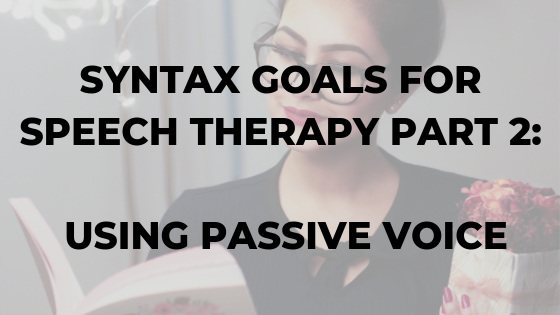When you’re treating language disorders, getting quality sentences from your students can seem impossible. We know they have weak grammar; but when it comes to actually treating the issues…sometimes we’re left drawing a blank. I used to go back to the old, tired goals for working on pronouns and verb tense. I’d work on getting…
Category: Syntax and Grammar Techniques for SLPs
One of the biggest challenges for students with language disorders is language structure; so SLPs need to teach them the rules of grammar and word order. In these articles, SLPs will learn easy-to-implement ideas and activities for their therapy focused on building morphology and syntactic awareness.
Have students with language processing difficulties? Try teaching them this skill.
We’ve all gotten that dreaded referral for unexplained “language processing” difficulties. Sometimes it can be hard to know where to start. The first challenge is knowing what type of screening procedures you should use when you’re deciding if you should evaluate. Once we’ve evaluated students and they’re on our caseloads we face a different problem:…
Syntax Worksheets for Speech Therapy
As a follow up to my last post on sentence combining; I wanted to give you some quick resources with syntax worksheets for speech therapy. There are MANY ways you can come up with creative simple sentences to combine to compound sentences. You can write sentences about different media, like images, videos, and stories. You…
How to target syntax in speech therapy.
Many of us know we should address syntax in speech therapy sessions for kids with language disorders; but many of us aren’t really sure where to start. I’ve made the mistake of skimming over syntax and going right to comprehension strategies; like with my student John I talked about in this article. John wasn’t making…
Syntax Goals for Speech Therapy Part 5: Sentences with Three or More Clauses
Welcome to the final installment of the Syntax Goals for Speech Therapy series, where I break down how to write the best speech therapy goals for syntax that focus on high-priority skills to build listening and reading comprehension. In this article series, I’ve broken down four challenging sentence types and how to target them (described…
Syntax Goals for Speech Therapy Part 4: Relative Clauses
Welcome to the fourth installment of the Syntax Goals for Speech Therapy, where I’m breaking down difficult sentence types so you can walk away with an IEP goal bank for syntax and a set of solid syntax activities for speech therapy. The inspiration to write this series came from the constant questions I get about…
Syntax Goals for Speech Therapy Part 3: Adverbial Clauses and Temporal/Causal Conjunctions
This is the third installment in Syntax Goals for Speech Therapy, where I’ll be giving you some sentence structure goals for speech therapy. In the first part, I shared a “base goal” for syntax that defines the “big idea” and ensures that you have a goal you can measure. In the second article, I talked…
Syntax Goals for Speech Therapy Part 2: Using Passive Voice
Before we dive in to our second installment of Syntax Goals for Speech Therapy and add to that IEP goal bank I started for you, I’ve got a question for you. How many times have you gotten the dreaded language processing referral? It might go a little something like this: Teacher: My student sounds funny….
Syntax Goals for Speech Therapy Part 1
If you struggle to write syntax goals for speech therapy, what you’re about to read will make your life substantially easier (spoiler alert: it involves a mini-IEP goal bank). Do you have students who can’t get their ideas across and don’t “sound right” when they’re talking? Maybe something sounds “off”, disorganized, or incomplete…but you can’t…
Grammar Worksheets for SLPs: A must-have tool for generalization
Having a set of “staple” grammar worksheets for your therapy can be a huge time-saver. Most of us have them, and can probably think of a couple times these handy grammar worksheets or card decks have saved us when we’ve had to resort to last minute planning when we’ve gotten swamped. These appeal to a…









